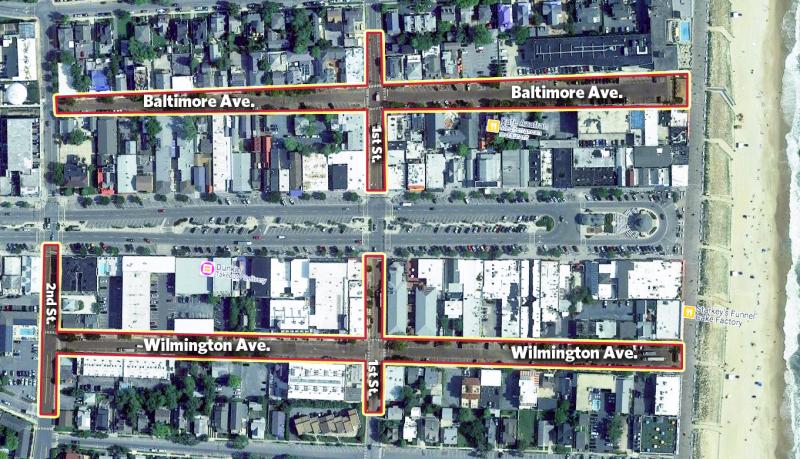Rehoboth task force voices concerns over one-way streets
A Rehoboth Beach task force created to look at ways to change the streetscape of Baltimore and Wilmington avenues held its second meeting April 7, and a consensus is starting to emerge on a number of subjects. Specifically, a disdain for one-way streets and the desire to pursue burying of utility lines.
Task force member Jenny Burton owns a number of properties on Baltimore Avenue. She said the west ends of Baltimore and Wilmington are too narrow to allow for trucks to turn. It would be a logistical nightmare, she said.
“One-way streets would hurt businesses,” said Burton. “The city would regret it, and businesses would leave.”
At one point, it was brought up that one-way streets could allow for more head-in parking, which would create more parking spaces. Mayor Stan Mills was not on board with that idea, saying there would still have to be two lanes so delivery trucks had a place to park. Otherwise, he said, the trucks would block the whole road and congestion could be worse.
The task force met for the first time March 31. The consultant hired by the city recommended not burying utility lines. However, during the recent meeting, task force members voiced a desire to explore the possibility before eliminating it.
Frank Cooper said if the task force didn’t do anything else but figure out a way to bury the lines, it would be a success. It would help make the streets pretty, because what the city has now is ugly, he said.
Alex Moore, a Wilmington Avenue hotel owner, agreed. It’s not really a streetscape project if it doesn’t include burying the power lines, he said.
One-way streets and burying utilities dominated the conversation, but the task force also talked about a traffic study and limited vehicle-access sections.
City Manager Sharon Lynn said she didn’t think a traffic study would be beneficial and would only cause delays. The city knows there’s traffic and it’s congested on a daily basis, she said.
Public Works Director Kevin Williams said if the task force thinks a traffic study is needed, then the city should give the state back the $100,000 grant given to hire the consultant and do the study. There are a lot of smart people in this group who know what traffic is like in the summer, he said.
As for limited-access areas, Moore said he was struggling to see the value in implementing them. Those limits are traditionally used in heavy retail zones, and that’s not what is located in these areas, he said.
Burton said she didn’t think limits would be a good idea because people are inherently lazy. Customers want to be able to park in front of the store where they want to shop.
The task force is next scheduled to meet at 9 a.m., Wednesday, April 14.













































